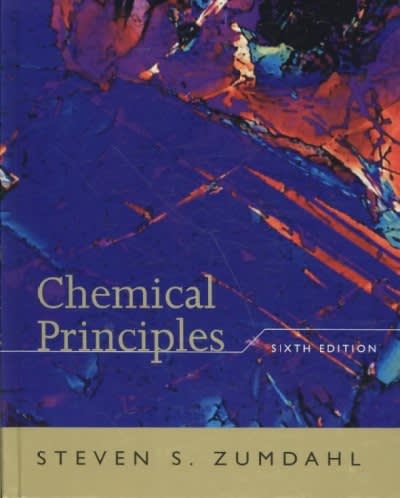A sample containing (0.0500 mathrm{~mol}) of (mathrm{Fe}_{2}left(mathrm{SO}_{4}ight)_{3}) is dissolved in enough water to make (1.00 mathrm{~L}) of
Question:
A sample containing \(0.0500 \mathrm{~mol}\) of \(\mathrm{Fe}_{2}\left(\mathrm{SO}_{4}ight)_{3}\) is dissolved in enough water to make \(1.00 \mathrm{~L}\) of solution. This solution contains hydrated \(\mathrm{SO}_{4}{ }^{2-}\) and \(\mathrm{Fe}\left(\mathrm{H}_{2} \mathrm{O}ight)_{6}{ }^{3+}\) ions. The latter behave as an acid:
\[\mathrm{Fe}\left(\mathrm{H}_{2} \mathrm{O}ight)_{6}{ }^{3+} ightleftharpoons \mathrm{Fe}(\mathrm{OH})\left(\mathrm{H}_{2} \mathrm{O}ight)_{5}{ }^{2+}+\mathrm{H}^{+}\]
a. Calculate the expected osmotic pressure of this solution at \(25^{\circ} \mathrm{C}\) if the above dissociation is negligible.
b. The actual osmotic pressure of the solution is \(6.73 \mathrm{~atm}\) at \(25^{\circ} \mathrm{C}\). Calculate \(K_{\mathrm{a}}\) for the dissociation reaction of \(\mathrm{Fe}\left(\mathrm{H}_{2} \mathrm{O}ight)_{6}{ }^{3+}\). (To do this calculation, you must assume that none of the ions goes through the semipermeable membrane. Actually, this is not a good assumption for the tiny \(\mathrm{H}^{+}\)ion.)
Step by Step Answer:






